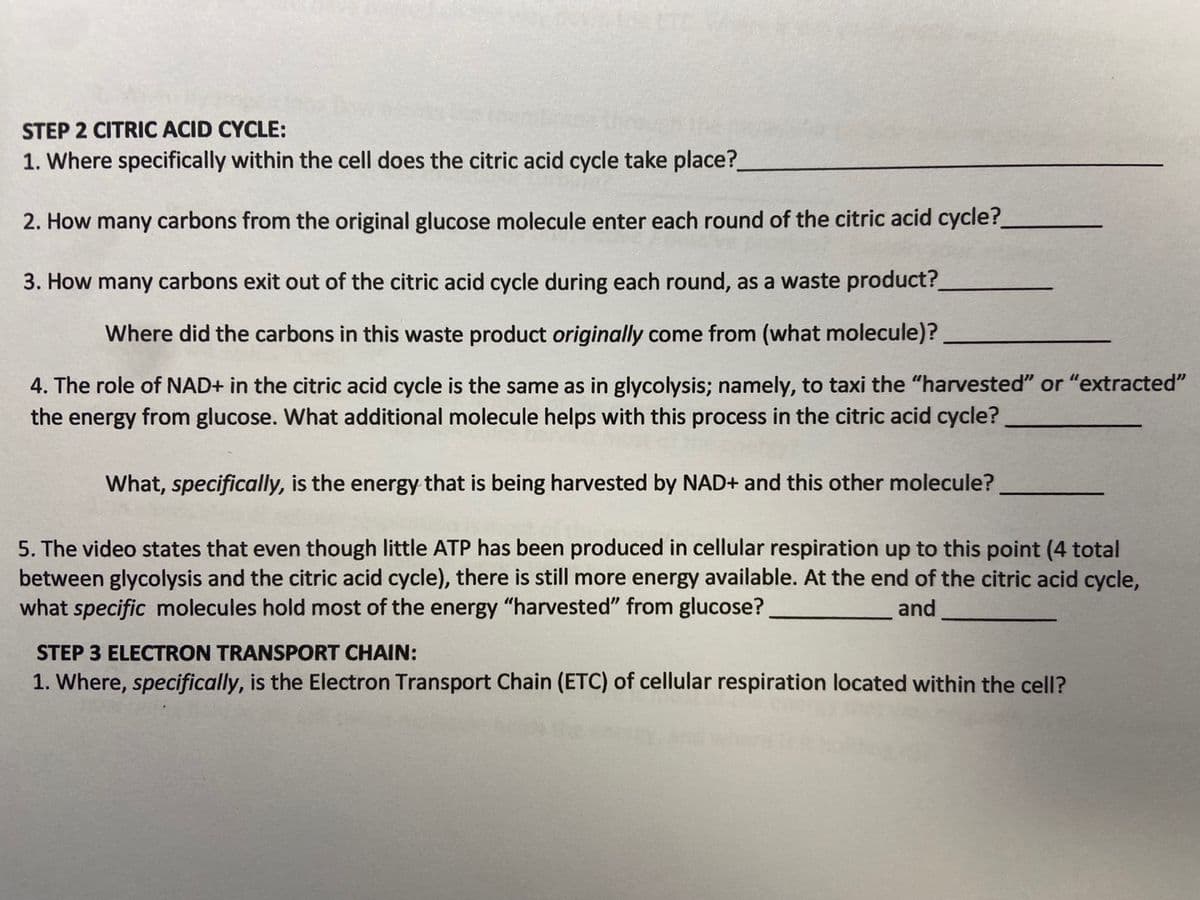1. Where specifically within the cell does the citric acid cycle take place?__________________________________ 2. How many carbons from the original glucose molecule enter each round of the citric acid cycle?________ 3. How many carbons exit out of the citric acid cycle during each round, as a waste product?_________ Where did the carbons in this waste product originally come from (what molecule)?
STEP 2 CITRIC ACID CYCLE:
1. Where specifically within the cell does the citric acid cycle take place?__________________________________
2. How many carbons from the original glucose molecule enter each round of the citric acid cycle?________
3. How many carbons exit out of the citric acid cycle during each round, as a waste product?_________
Where did the carbons in this waste product originally come from (what molecule)?
4. The role of NAD+ in the citric acid cycle is the same as in glycolysis; namely, to taxi the “harvested” or “extracted”
the energy from glucose. What additional molecule helps with this process in the citric acid cycle? ____
What, specifically, is the energy that is being harvested by NAD+ and this other molecule?
5. The video states that even though little ATP has been produced in
between glycolysis and the citric acid cycle), there is still more energy available. At the end of the citric acid cycle,
what specific molecules hold most of the energy “harvested” from glucose? ____ and ___

Trending now
This is a popular solution!
Step by step
Solved in 3 steps









